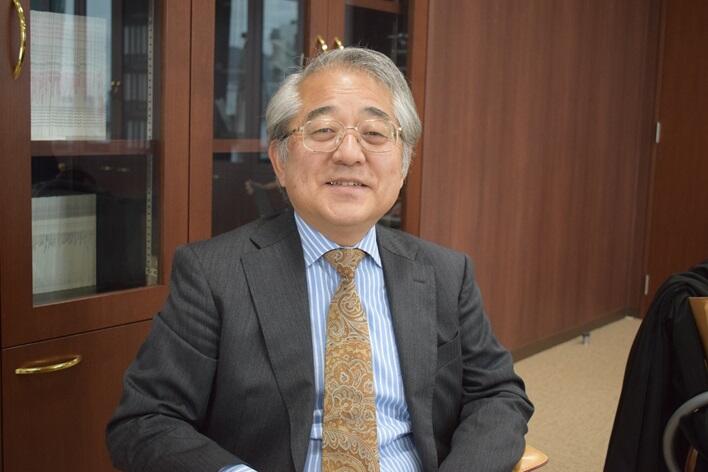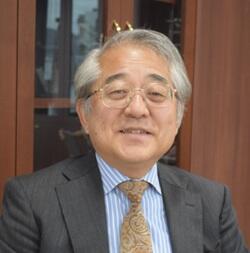Japan's position in the world university rankings and publication indices point to a decline in the country's research performance. During the period that research on blue LEDs and conductive polymers, for which the Nobel Prize was later awarded, continued steadily, it was not received with high regard globally and could not be measured with any indices. The Grants-in-Aid for Scientific Research (KAKENHI) and basic funding supported such academic research. What initiatives are needed to continue to develop Japan's academic research in the future? The Science News spoke to Tsuyoshi Sugino, the president of the Japan Society for the Promotion of Science (JSPS) and heard his views on the topic.

Sugino's commentary follows:
Academia is a rich and diverse forest
Various indicators and rankings point out that Japan's overall research strength, including basic research capabilities, has severely eroded. Such data must be referenced. However, I believe that Japan's academic research remains strong. In fact, in talking to people from overseas academic promotion organizations, we find that Europeans in particular, still hold Japan's academic research capabilities in high regard.
First, academic research is not conducted to raise rankings or various indices. Rather, it is done to gratify the curiosity of individual researchers. It is the very diverse and rich academic activities that are of value. I believe that academia, like the arts, is a realm whose value is extremely hard to calibrate in numerical terms.
As a result, wonderful academic research blooms that ends up winning a Nobel Prize. Cultivating a diverse and rich academic forest is crucial, rather than applying some special fertilizer to make it bloom or watering only special areas. Only in such forests can research support in a programmatic approach for solving specific issues pay off.
In addition to the high level of research in all academic fields, I feel the reason why Japan enjoys foreign people's high regard is their unwavering respect for Japan's academic research environment and culture.
There are many different views on Japan's overall research strength, and there are quite a few pessimistic ones. We should understand these with humility and use them as a reference, but I would say, there is no need to be overly pessimistic.
Forests require metabolism
If academic research could be analogized to a forest, the academic research forest needs to keep growing and changing [with the] generations to make it sustainable. For this to happen, an environment where young talents can emerge, and grow is indispensable. The government has been making tremendous efforts to support young researchers for the past several years. It is important to create an environment where young researchers can play an active role and challenge themselves to the fullest, with support from the government.
The rate and number of students enrolling into postdoctoral programs has been declining since the beginning of the 2000s. But for last five years, this trend has halted, with the percentage of students going on to pursue postdoctoral programs rising from 9.2% in 2017 to 9.9% in 2022. The number of those students has increased steadily from 6,575 in 2017 to 7,120 in 2022.
The graduate student doubling plan, as well as the 10,000 post-doctoral fellows plan, expanded the supply; however, the collapse of the bubble economy caused a mismatch as the demand for doctoral graduates fell. There was a period of more than a dozen years during which posts for young researchers were reduced, mainly at national universities, due to the extension of retirement ages for faculty members and a decrease in the Management Expense Grant. These factors combined had an unfavorable effect on the rate and number of students pursuing doctoral coursework for a long period. As the phase of demand-supply alignment has ended and improvements in graduate education have been achieved, opening secure career paths for doctoral graduates has resulted in an improved situation for students wishing to enroll in postdoctoral courses.
To ensure that such opportunities are seized, we will reinforce support for young researchers so that those who have entered the postdoctoral program and postdoctoral fellows are able to play an even more active role. This is one of the missions of JSPS.
Among these efforts, the JSPS programs for Research Fellowships have been revised to enable institutions to employ postdoctoral fellows (PDs) and others. This is because it is crucial to cooperate with universities and research organizations where PDs are actually trained. This fiscal year, when we invited institutions to introduce this employment system, 78 institutions registered, and more than 300 people—above 30% of all PDs—were hired by them. Some institutions were not able to make it in time this fiscal year, so we expect more PDs to benefit from this system next fiscal year. Furthermore, we would like to promote other initiatives for exchanges among research fellows in the future.
Women researchers are key to diversity
Diversity is essential to the growth of a rich academic forest. The culture of academic research in Japan represents a wide range of diversity, but if there is one area where efforts are lacking, it is in the number of female researchers, which remains limited. Though their numbers are steadily increasing, the number of women who are willing to work in Japan's academia is much smaller than that in Europe. It is necessary for not only JSPS but also the entire academia to create an environment where female researchers play an active role or send out a message that encourages women to become researchers. I believe this is the biggest part of work left for promoting diversity.
For example, the number of nominees for the JSPS Ikushi Prize, which is awarded to outstanding graduate students in doctoral programs, has been expanded this fiscal year to two nominees, if women are included. Under the new rules, two women or one man and one woman can be nominated for each discipline, such as the humanities and social sciences. But if the nominees are only males, only one can be nominated. Considering the outcomes of discussions at the Research Center for Science Systems of JSPS, we switched our policy to an open door more for women, first, at the nomination stage. I think this is one of the clearest messages.
Deeply rooted problems concerning internationalization
Another aspect of diversity concerns internationality. JSPS has historically been committed to enhancing international academic exchanges. Looking at the current situation of international research exchange in Japan, when the number of Japanese researchers going abroad and that of foreign researchers coming to Japan are compared, the former exchange was interrupted, temporarily at times, as in the period after the terrorist attacks in the U.S. But except for such special circumstances, the number of Japanese researchers going abroad is increasing steadily. On the other hand, the number of foreign researchers coming from abroad dropped sharply after the Great East Japan Earthquake, then recovered, but has since remained stagnant for the last 10 years.
The number of foreign tourists visiting Japan has increased overwhelmingly due to inbound tourism after the COVID-19 pandemic. We should, however, look a little more seriously at the situation where more people come to Japan for tourism but not for research. If the problem is caused by the research environment, including the compensation for researchers in Japan, it is then a deep-rooted issue. We believe this must be a challenge for us all, since the research environment involves Japan's researchers as well.
To enrich the soil of the forests
The provision of research funds to academia from various supporting organizations, including Grants-in-Aid for Scientific Research, is like watering a forest. Even if the forest continues to be watered, the soil must be rich for the forest to grow. In this sense, it is critical to develop the infrastructure over the long term, beyond short-term and medium-term research funding. Financial support for fundamental areas has been provided in the form of former special accounts for national universities, Management Expense Grants, and subsidies for ordinary expenses for private universities. But since the late 1980s (the end of the Showa era), basic support funding was gradually coming closer to its limit, and the financial conditions had become insufficient to provide adequate support.
In recent years, new alternatives for basic support mechanisms—for instance, 10 trillion yen to top-class research universities, or the JSPS's Program for Promoting the Enhancement of Research Universities with a Regional Core and Distinctive Characteristics—have been implemented. I think these would be very encouraging government initiatives, and we must make sure that our support benefits each university.
JSPS has also begun to take on the business of providing basic support to research institutions. From now on, in addition to JSPS's mission to support individual researchers through research funding, such as Grants-in-Aid for Scientific Research, or through fellowships, such as researcher fellowships, we will build another major JSPS pillar of business to provide basic support for institutions like universities or research centers located therein, thereby strengthening a so-called new form of our dual support efforts.

Profile
SUGINO Tsuyoshi
A graduate of the Faculty of Economics, Kyoto University. In 1984, he joined the Ministry of Education (which later merged into the Ministry of Education, Culture, Sports, Science and Technology [MEXT]), where he served as the director of the Scientific Research Aid Division, supervising KAKENHI, and as the director of the National University Corporation Support Division and Private Education Institution Administration Division. After serving as the president of the National Institutes for Cultural Heritage (an independent administrative institution) and other positions, he became the director-general of MEXT's Research Promotion Bureau and has been in the current position since April 1, 2022.
This article has been translated by JST with permission from The Science News Ltd. (https://sci-news.co.jp/). Unauthorized reproduction of the article and photographs is prohibited.




